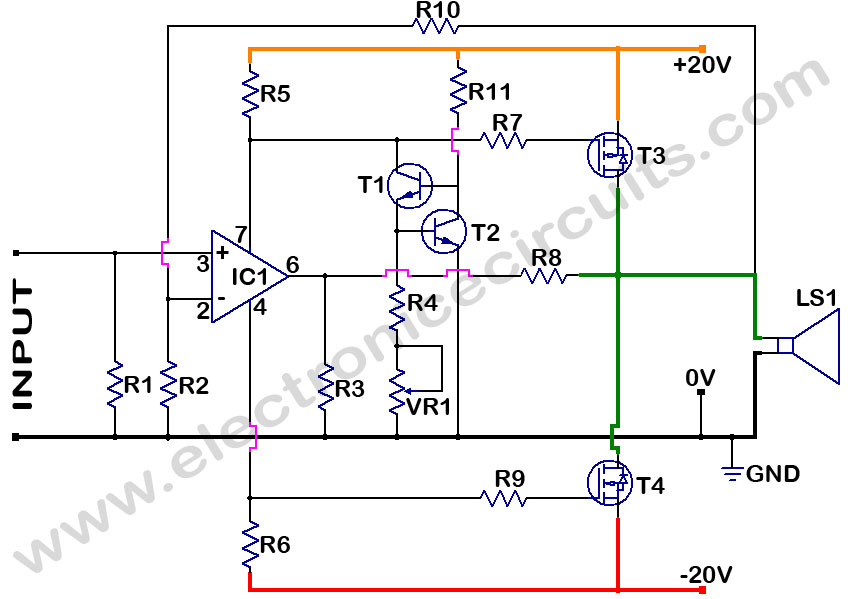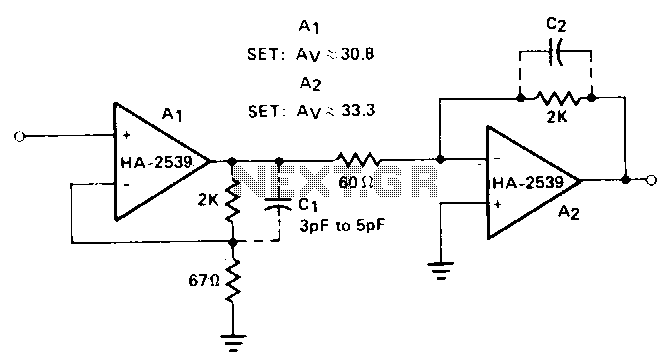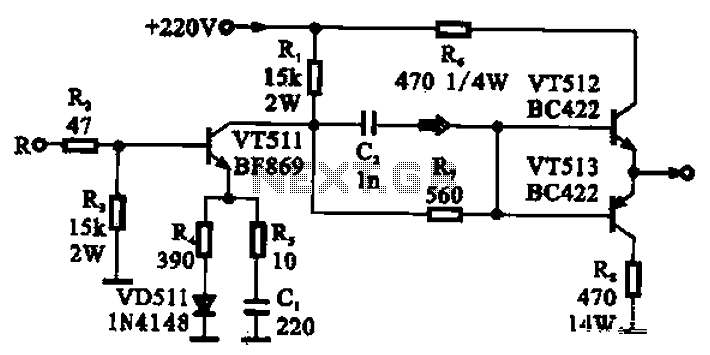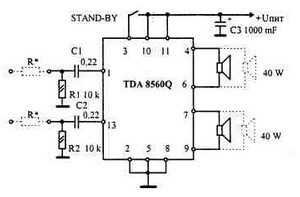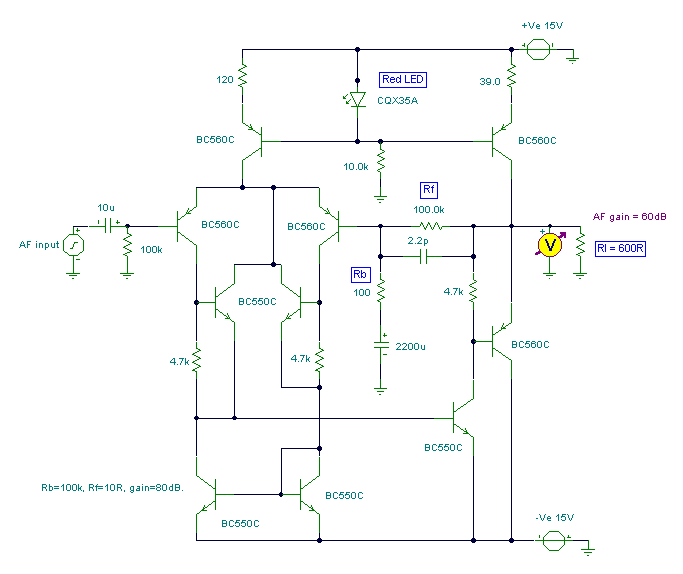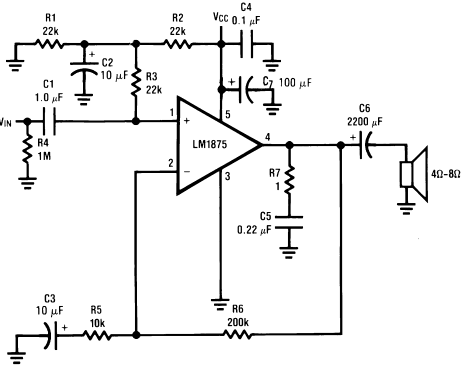
Monoblock amplifier

High-quality mono audio amplifier circuit. This amplifier is built on the classic symmetrical scheme, with the output stage operating in class AB. It delivers excellent sound quality, requiring minimal setup and featuring a limited number of components.
The high-quality mono audio amplifier circuit utilizes a symmetrical design, which is known for its efficiency and sound fidelity. The output stage operates in class AB, a configuration that combines the advantages of both class A and class B amplifiers. This results in a low crossover distortion while maintaining good power efficiency, making it suitable for various audio applications.
The circuit typically consists of a few key components, including transistors, resistors, capacitors, and a power supply. The transistors are arranged to form the differential input stage, which amplifies the audio signal with minimal noise. Feedback is implemented to stabilize the gain and enhance linearity, ensuring that the output faithfully reproduces the input audio signal.
The use of a limited number of components simplifies the assembly process, making the circuit accessible for both novice and experienced builders. The design's robustness allows it to perform well across a range of audio frequencies, making it ideal for home audio systems, small public address systems, or as a learning project for audio electronics.
Power supply considerations are also crucial; the circuit typically requires a dual power supply (positive and negative voltages) to function correctly. Proper decoupling capacitors should be included to filter out any noise from the power supply, ensuring clean audio output.
In summary, this mono audio amplifier circuit exemplifies a straightforward yet effective approach to audio amplification, providing high sound quality with an uncomplicated design that is easy to implement.High quality mono audio amplifier circuit. This amplifier is built on the classic symmetrical scheme with output stage operates in class AB and has a pretty good sound, with no complicated setup and scarce components. 🔗 External reference
The high-quality mono audio amplifier circuit utilizes a symmetrical design, which is known for its efficiency and sound fidelity. The output stage operates in class AB, a configuration that combines the advantages of both class A and class B amplifiers. This results in a low crossover distortion while maintaining good power efficiency, making it suitable for various audio applications.
The circuit typically consists of a few key components, including transistors, resistors, capacitors, and a power supply. The transistors are arranged to form the differential input stage, which amplifies the audio signal with minimal noise. Feedback is implemented to stabilize the gain and enhance linearity, ensuring that the output faithfully reproduces the input audio signal.
The use of a limited number of components simplifies the assembly process, making the circuit accessible for both novice and experienced builders. The design's robustness allows it to perform well across a range of audio frequencies, making it ideal for home audio systems, small public address systems, or as a learning project for audio electronics.
Power supply considerations are also crucial; the circuit typically requires a dual power supply (positive and negative voltages) to function correctly. Proper decoupling capacitors should be included to filter out any noise from the power supply, ensuring clean audio output.
In summary, this mono audio amplifier circuit exemplifies a straightforward yet effective approach to audio amplification, providing high sound quality with an uncomplicated design that is easy to implement.High quality mono audio amplifier circuit. This amplifier is built on the classic symmetrical scheme with output stage operates in class AB and has a pretty good sound, with no complicated setup and scarce components. 🔗 External reference
